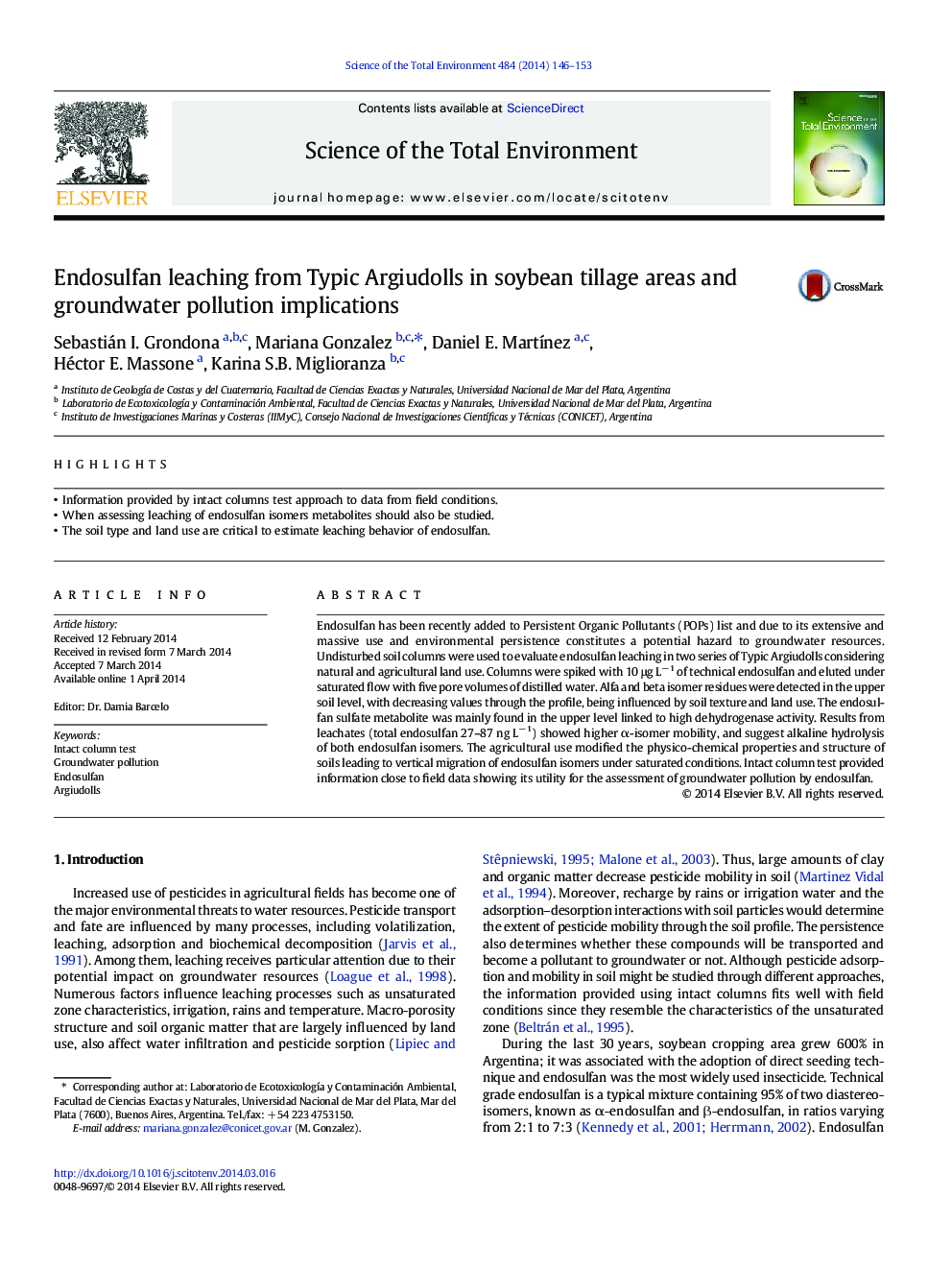| Article ID | Journal | Published Year | Pages | File Type |
|---|---|---|---|---|
| 6330612 | Science of The Total Environment | 2014 | 8 Pages |
Abstract
Endosulfan has been recently added to Persistent Organic Pollutants (POPs) list and due to its extensive and massive use and environmental persistence constitutes a potential hazard to groundwater resources. Undisturbed soil columns were used to evaluate endosulfan leaching in two series of Typic Argiudolls considering natural and agricultural land use. Columns were spiked with 10 μg Lâ 1 of technical endosulfan and eluted under saturated flow with five pore volumes of distilled water. Alfa and beta isomer residues were detected in the upper soil level, with decreasing values through the profile, being influenced by soil texture and land use. The endosulfan sulfate metabolite was mainly found in the upper level linked to high dehydrogenase activity. Results from leachates (total endosulfan 27-87 ng Lâ 1) showed higher α-isomer mobility, and suggest alkaline hydrolysis of both endosulfan isomers. The agricultural use modified the physico-chemical properties and structure of soils leading to vertical migration of endosulfan isomers under saturated conditions. Intact column test provided information close to field data showing its utility for the assessment of groundwater pollution by endosulfan.
Keywords
Related Topics
Life Sciences
Environmental Science
Environmental Chemistry
Authors
Sebastián I. Grondona, Mariana Gonzalez, Daniel E. MartÃnez, Héctor E. Massone, Karina S.B. Miglioranza,
